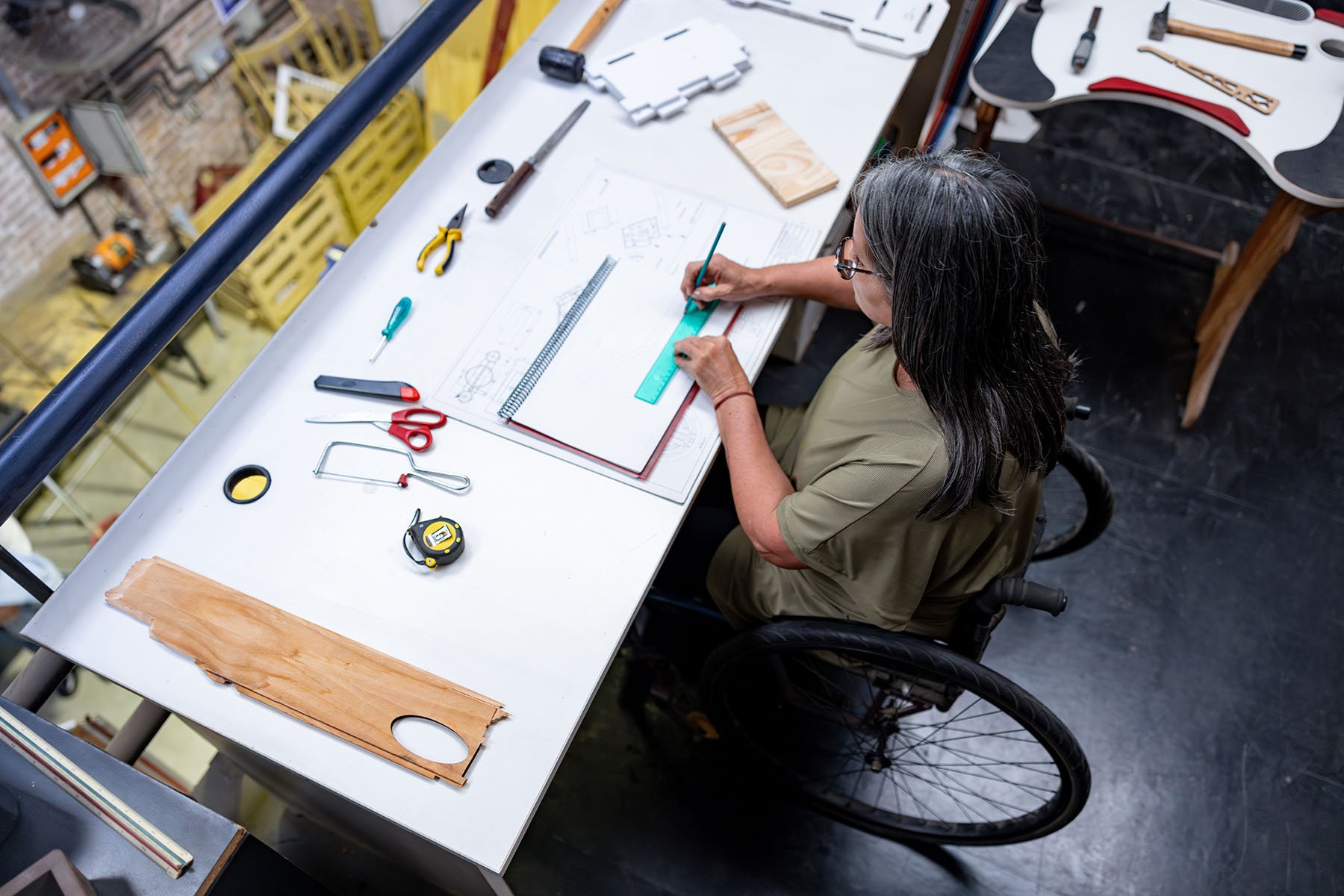Your trusted source for contextualizing the news. Sign up for our daily newsletter.
Today marks the first ever Disabled Women’s Equal Pay Day, highlighting that a disabled woman makes 50 cents for every dollar earned by a non-disabled man in the United States, according to a new report.
The National Partnership for Women & Families, a nonpartisan organization that advocates for family policy, used data from the American Community Survey to calculate the pay disparity. Legislators have taken notice.
“No worker — no matter their gender, their background, or whether they have a disability — should be robbed of their dignity or of a fair paycheck. Recognizing Equal Pay Day for women with disabilities is an important way to continue acknowledging the inequities those workers face and the work we must do to end them,” Sen. Patty Murray, a Washington Democrat, told The 19th.
Murray will be introducing a resolution marking the first ever Disabled Women’s Equal Pay Day in the Senate. Rep. Jennifer Wexton will introduce a matching resolution in the House. Wexton also held a press event today with the Democratic Women’s Caucus with Rep. Rosa DeLauro and Rep. Ayanna Pressley to mark the occasion.
For Wexton, the issue is personal. She has progressive supranuclear palsy, a neurodegenerative disorder that has impacted her ability to speak clearly and walk, among other challenges.
“I’ve come to personally know a bit about the challenges that people with disabilities face each day. But despite these challenges, I’ve only grown in my conviction that my disability does not define me nor the millions of other Americans who face challenges making it harder to move, speak, act, or otherwise live their day to day lives,” Wexton told The 19th. “We should not be treated — or paid — any differently because of those challenges. I’m proud to lead this effort to recognize Disabled Women’s Equal Pay Day and fight to close the unfair and unacceptable wage gap that women with disabilities face.”
The pay gap is calculated by analyzing all the jobs non-disabled men and disabled women have and comparing the median wages for each group, using data from the American Community Survey. The figure for disabled women is typically compared with that for non-disabled white men because those men are the highest-paid group and are a significant portion of the labor force — about a third of all working Americans. Asian men earn slightly more but are only about 3 percent of the workforce.
New analysis from the National Partnership for Women & Families delves deeper into the details of the disparities different disabled women face. Using census data, researchers found that Black, Latina and Indigenous disabled women face a larger wage gap, making 45 cents and 44 cents for every dollar made by a non-disabled white man, respectively.
“There is no one reason for these wage gaps to occur. There’s a lot of deliberate economic policies, a lot of which are based in our history of eugenics, ableism, racism and sexism in wages, whether people can work, how people can work and all of these different things,” said Marissa Ditkowsky, disability economic justice counsel for the National Partnership for Women & Families and a lead author of the analysis.
Kate Caldwell, director of research and policy for Northwestern University’s Center for Racial and Disability Justice, noted that this report is one of the first to provide data on disabled women by race. Caldwell first became involved in trying to establish Disabled Women’s Equal Pay Day in 2017.
“I put out a graphic on social media basically breaking down what disabled men and disabled women were being paid, as well as workers and institutions and in sheltered workshops,” Caldwell said. “I was trying to be involved in the Women’s Equal Pay Day discussion, but they weren’t talking about disability at all. When I put out that graphic, it allowed me to connect with so many other people who had the same frustration.”
But Caldwell’s graphic did not include disparities by race. At the time, the data wasn’t available.
“Disabled women of color on social media responded to that graphic, saying, ‘Can you break it down by race?’ And I couldn’t break it down. At the time, there was no way to break the disability data down by race because it just simply wasn’t disaggregated. People were even more frustrated at that, and rightly so,” Caldwell said.
Since then, she and many others have pushed for better data collection on disabled workers. While data by race is available, there is still work to be done.
Katherine Gallagher Robbins, a senior fellow at the National Partnership for Women & Families and a co-author of the new analysis, noted limitations in the ways the American Community Survey defines disability in their data collection, as well as the lack of federal data collection on LGBTQ+ Americans.
“The [census] questions are a functional measure of disability. Are you able to do X? Are you able to do Y? And the way that they ask those functional questions, first of all, doesn’t speak to disability as an identity. There’s no question that says, ‘Are you a disabled person? Yes or no.’ So you don’t have the opportunity to just define yourself, which is pretty problematic,” Robbins told The 19th.
The American Community Survey is also poor at capturing certain kinds of disabilities, according to Robbins.
“Disabilities related to mental health, as well as chronic conditions where maybe sometimes you have trouble bathing and dressing, but other times you don’t. How do you answer that?” Robbins said.
The pay gap is also a so-called raw figure —– it does not control for other factors such as education or experience. However, the calculation is still useful as a reflection of what kinds of jobs people have access to. Do disabled women have the same access to high-paying jobs? The answer appears to be “no.”
The report and census data do not indicate why, precisely, the wage gap exists, and further research is needed. One possible reason? Differences in caregiving expectations between men and women, even when disabilities are involved. Women are generally expected to take on the bulk of caregiving responsibilities, and across demographics, mothers make less money than fathers due to time spent out of the workforce taking care of those responsibilities.
This is not a complete explanation, however. There is very little data on how many disabled women are mothers.
Still, even this limited data is a step forward. The inclusion of Disabled Women’s Equal Pay Day for the first time highlights a disparity that is often overlooked, according to Deborah Vagins, director of Equal Pay Today, a coalition that hosts equal pay days throughout the year, to raise awareness about the pay gaps faced by American women.
“The Equal Pay Days [for different groups of women] have been added over time. Disability rights groups organized and we added this day,” she said. “We need to acknowledge the very severe wage gaps for women with disabilities.”





